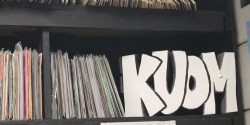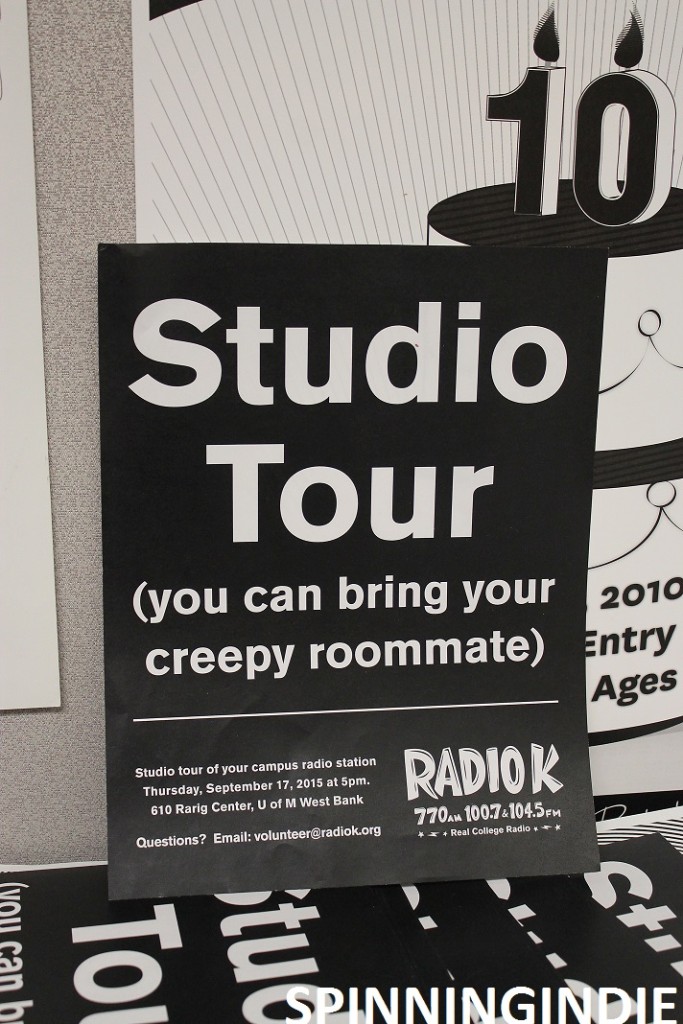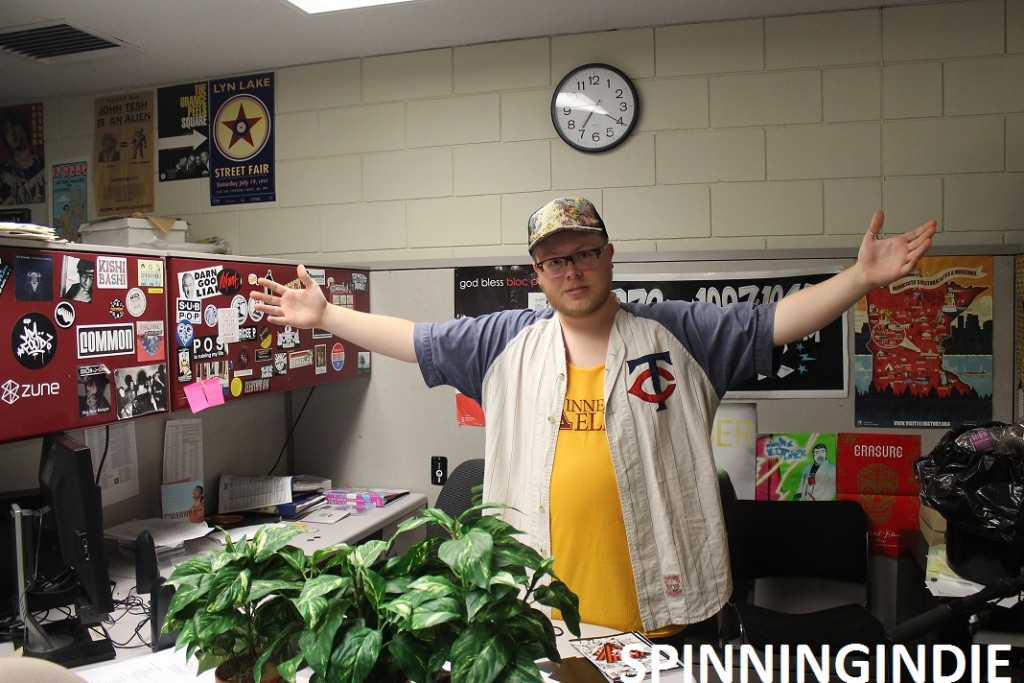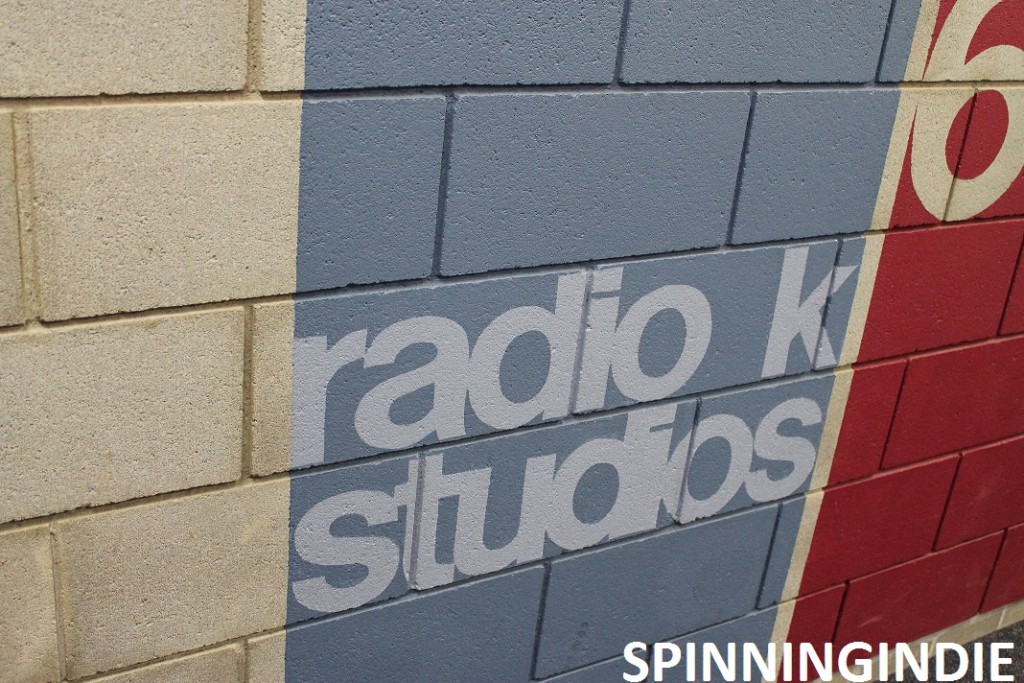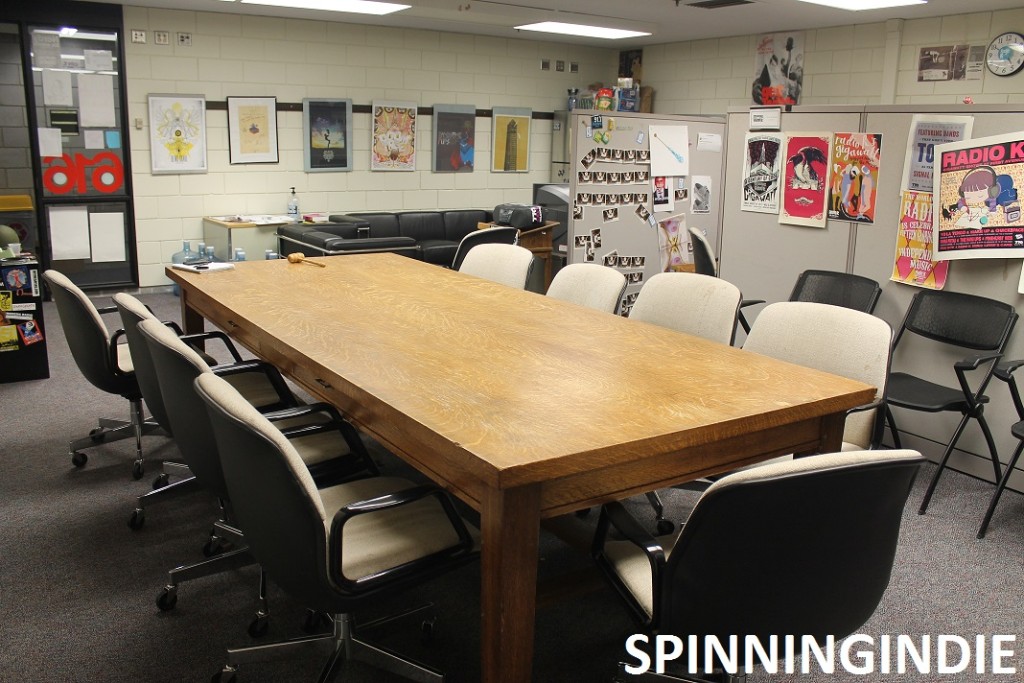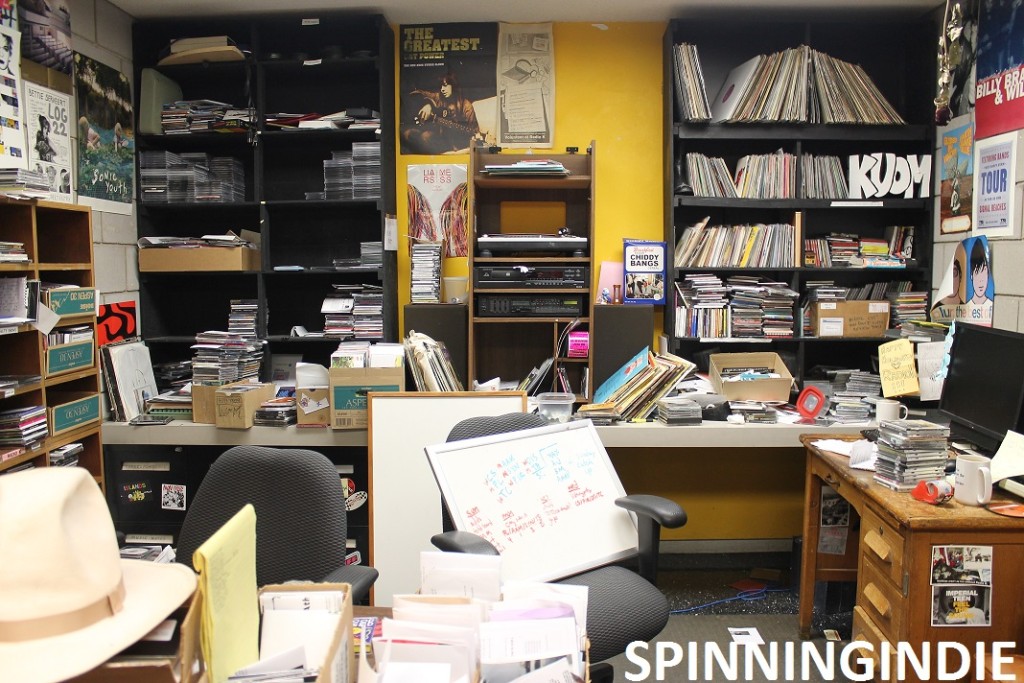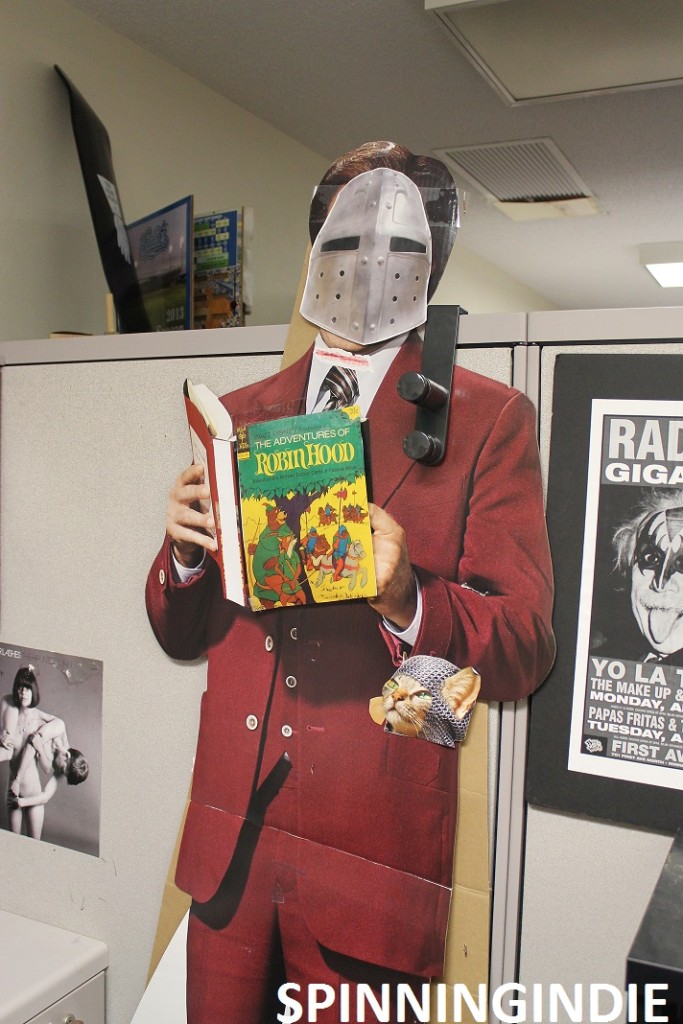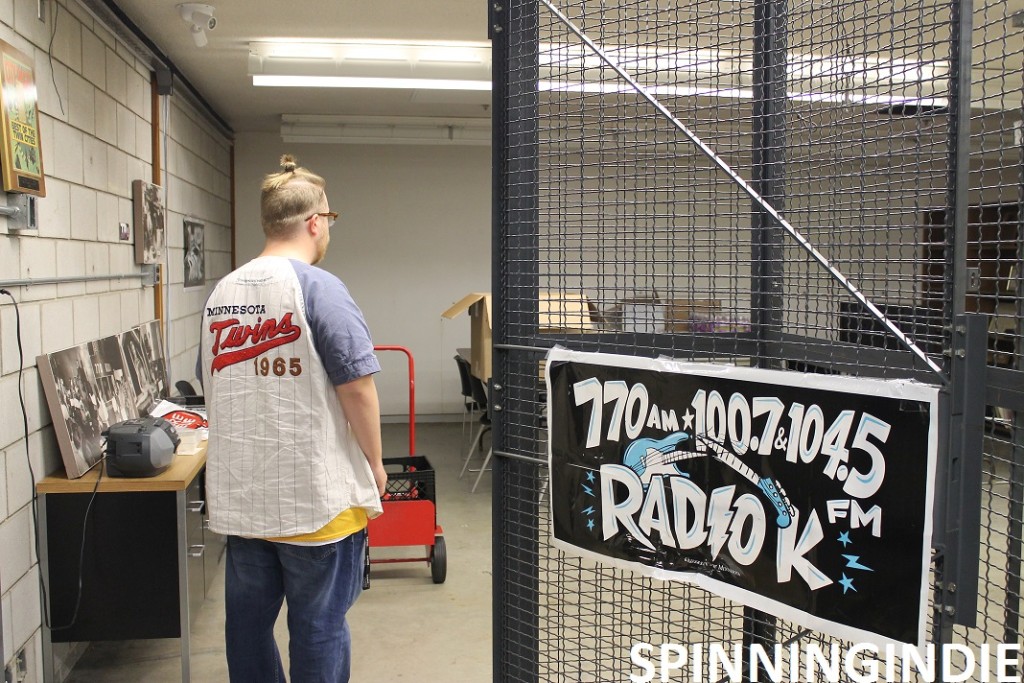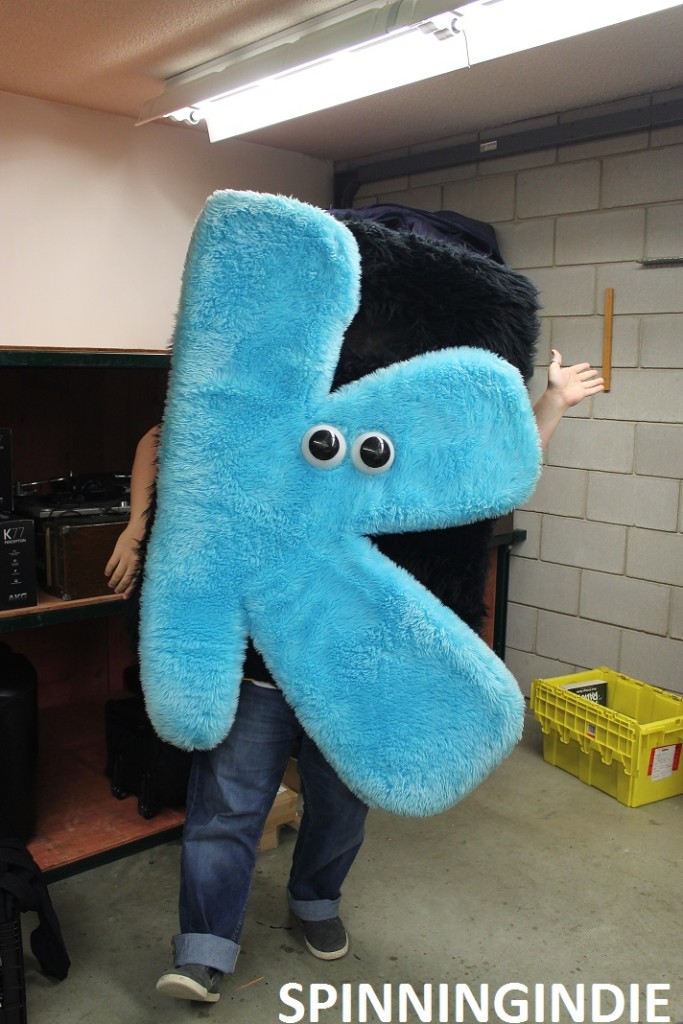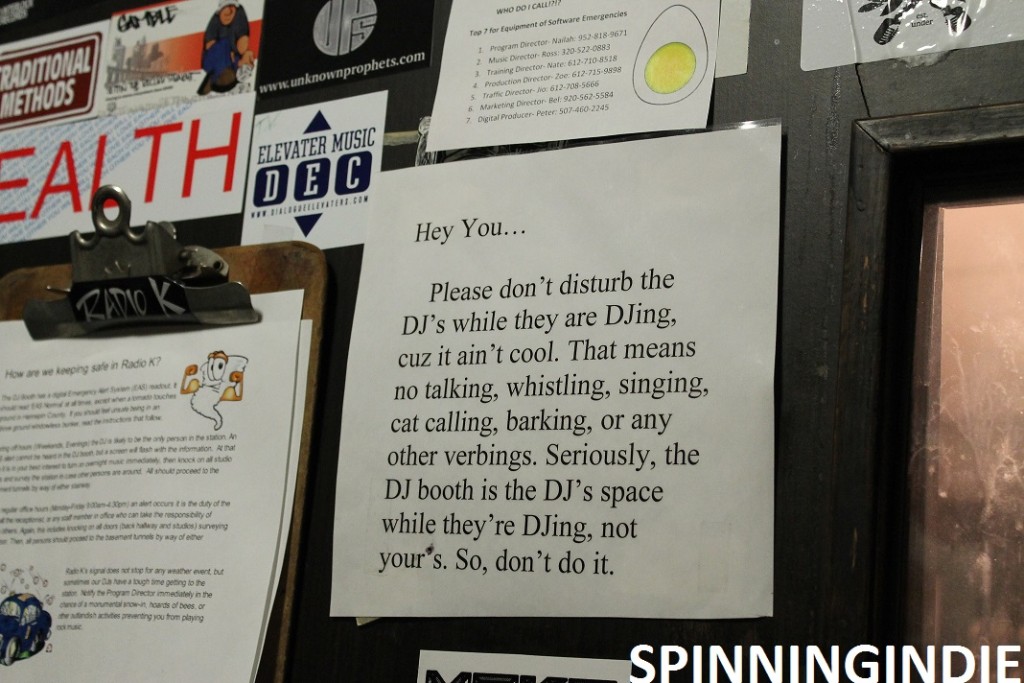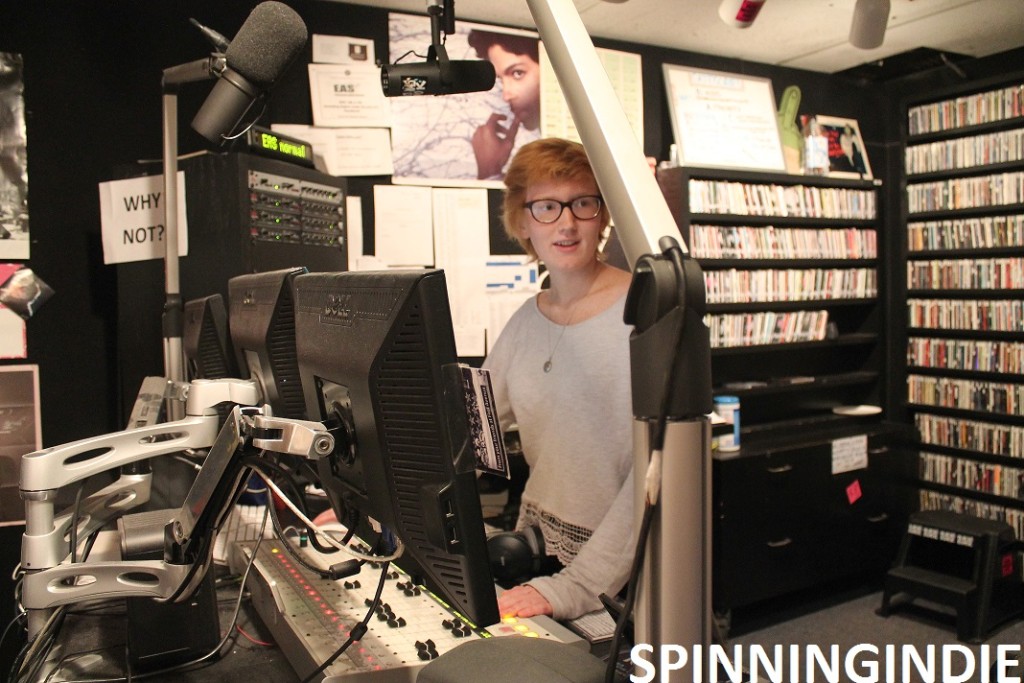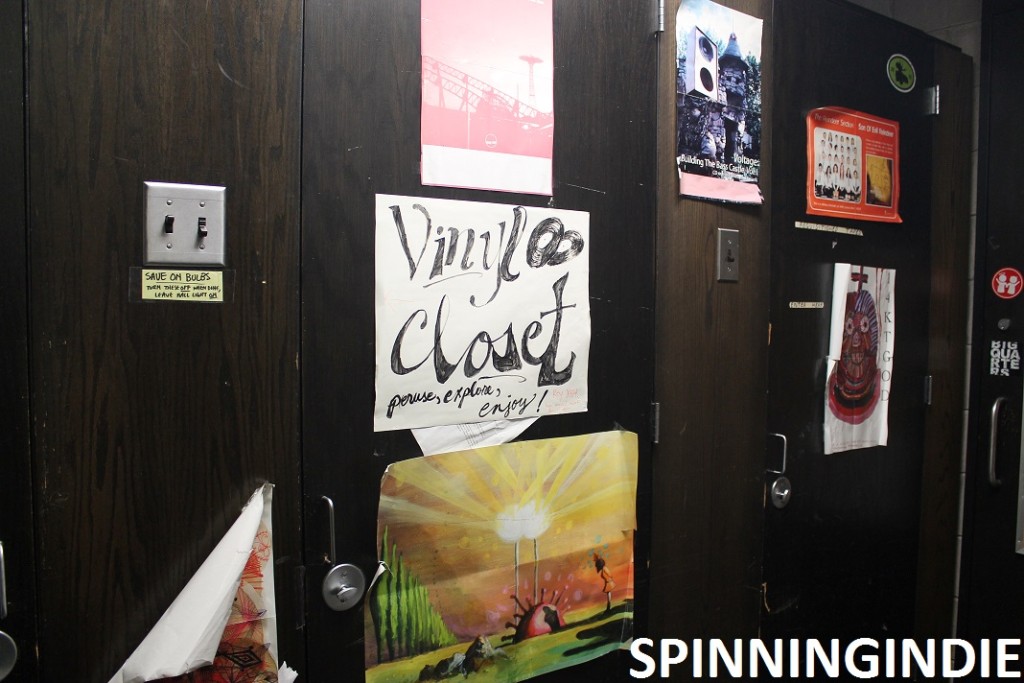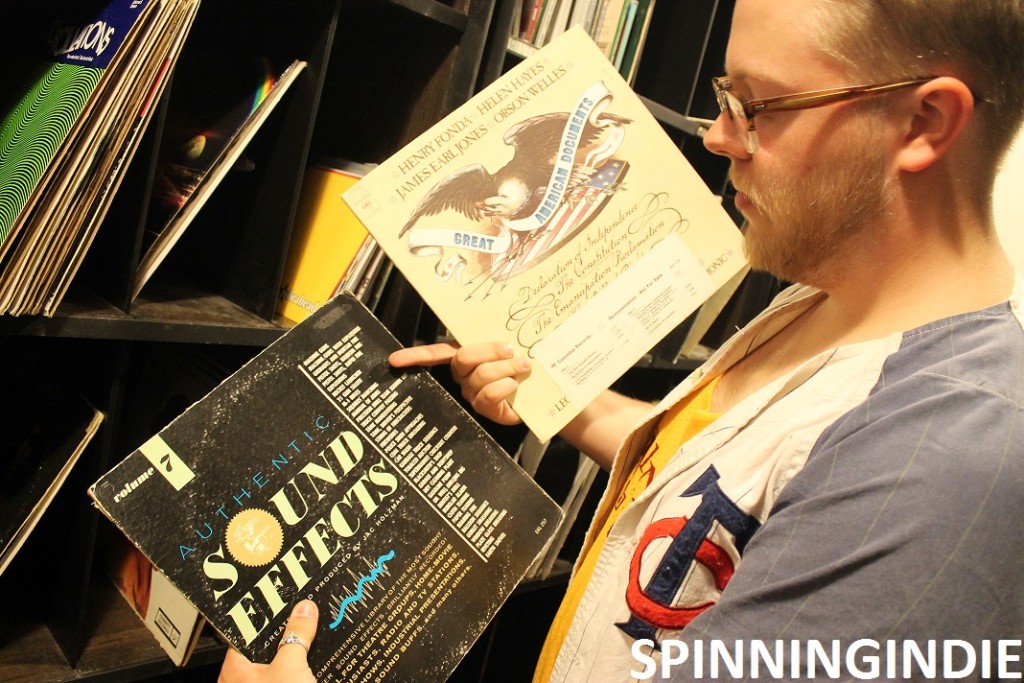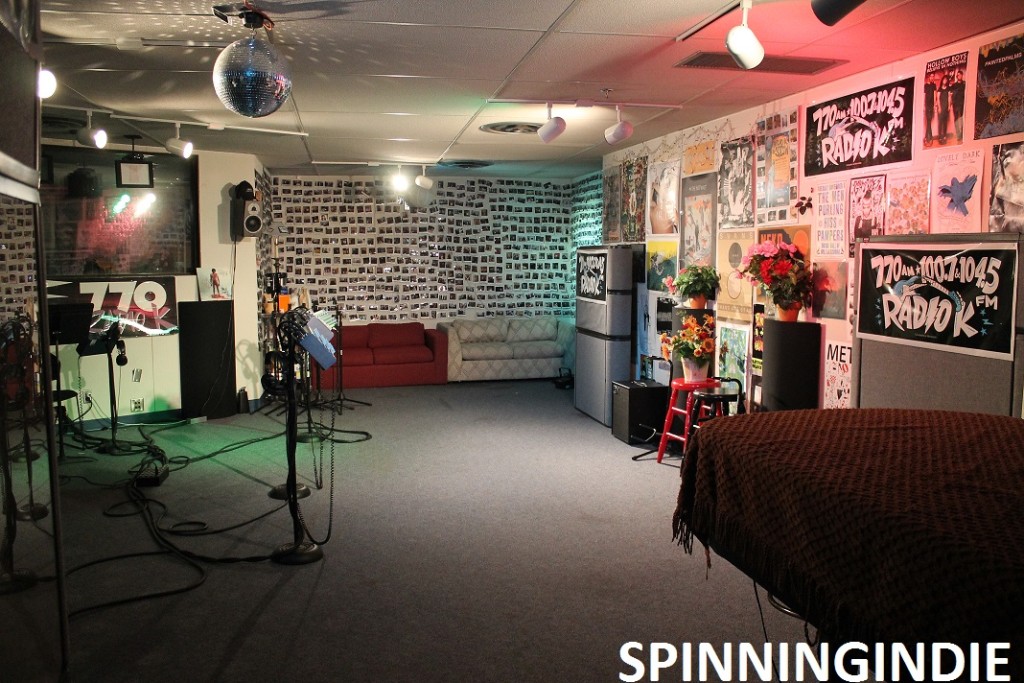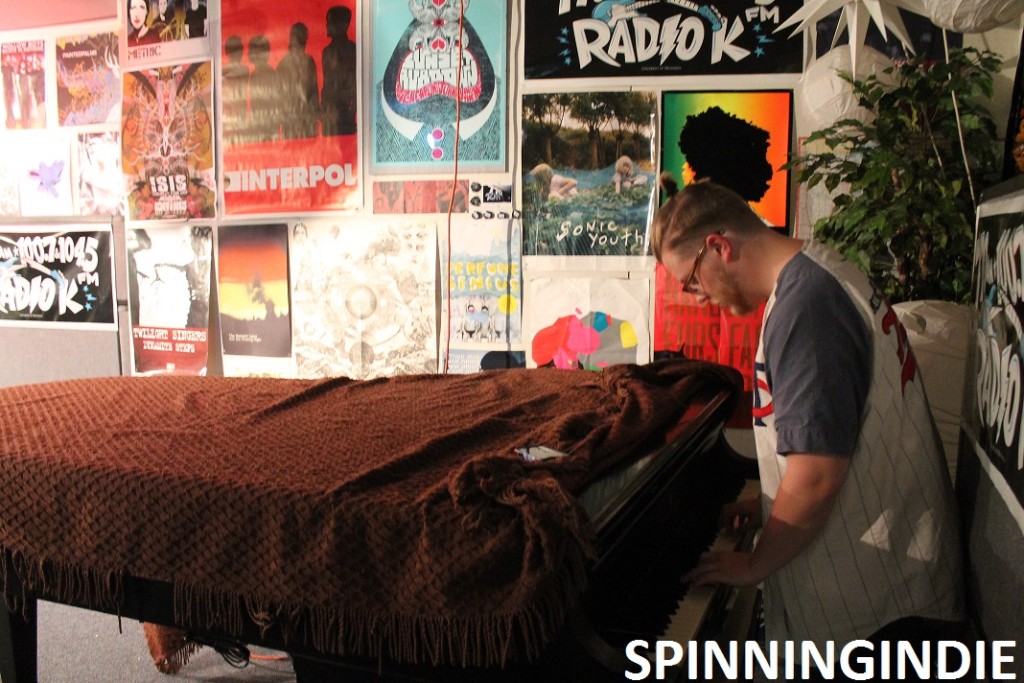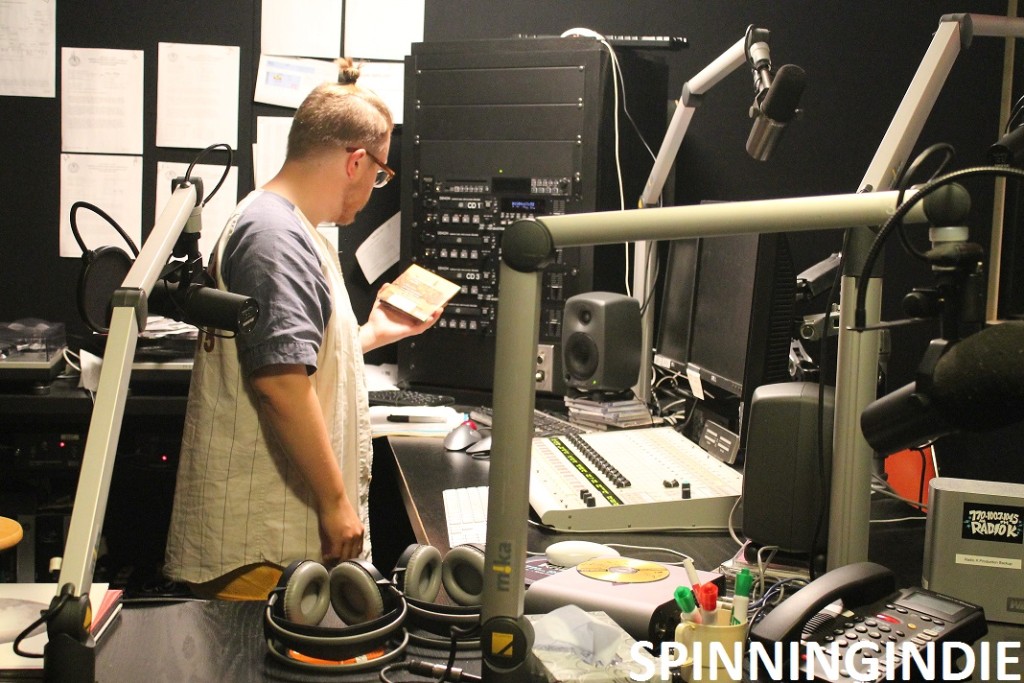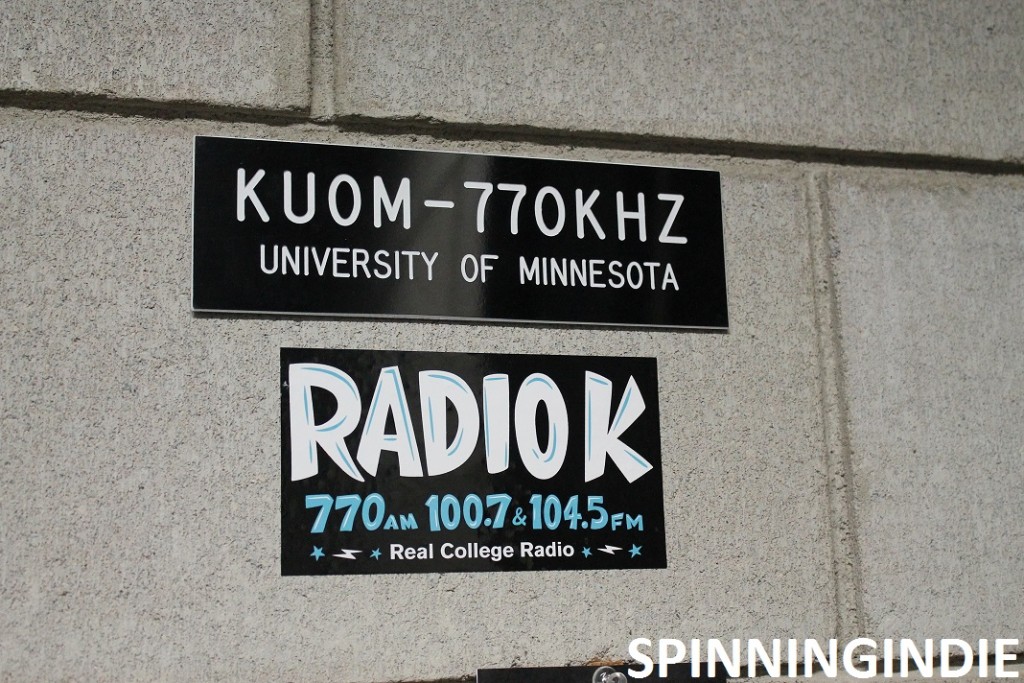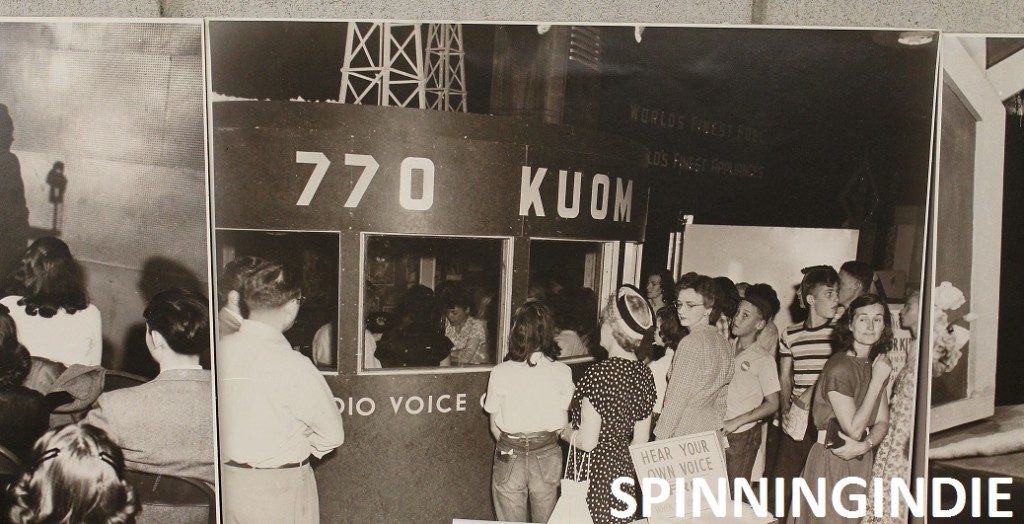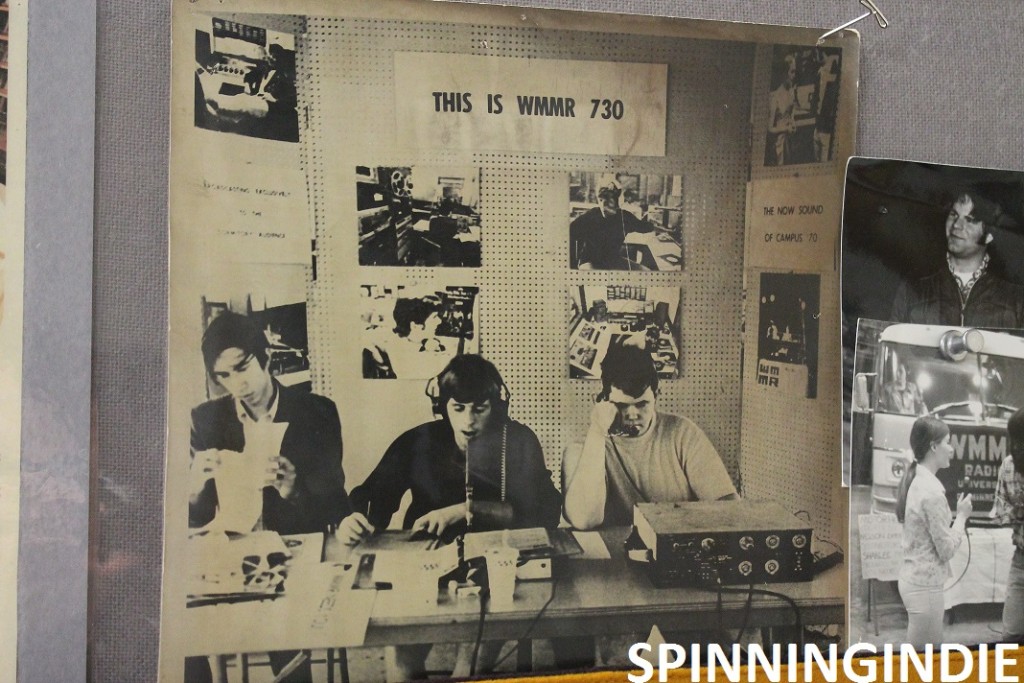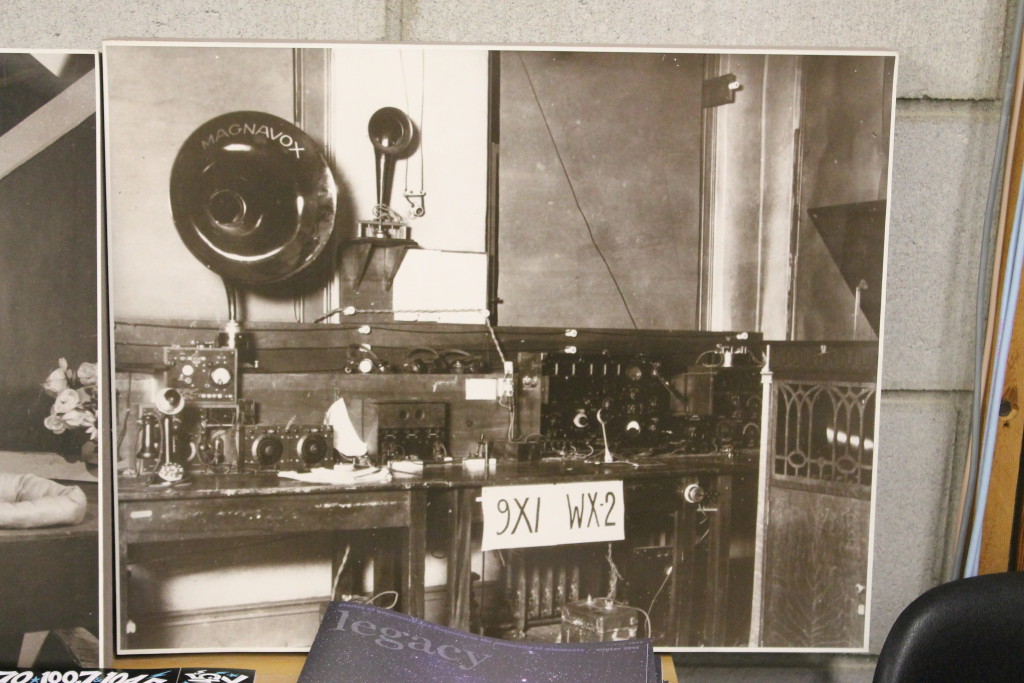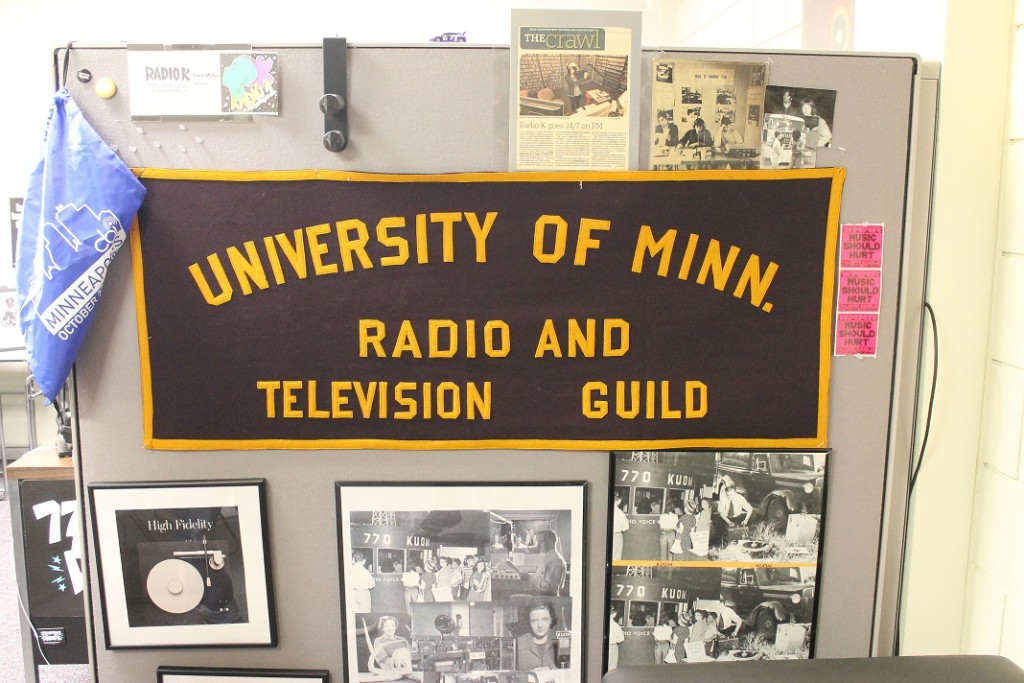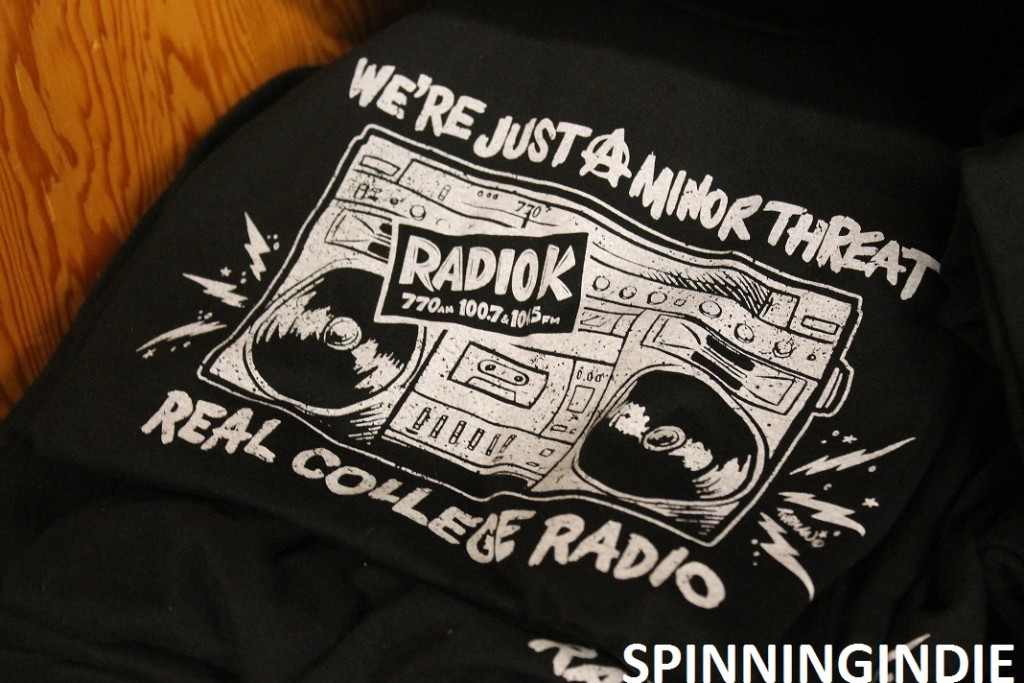On Friday, October 23, I had a wonderful experience visiting University of Minnesota’s college radio station, Radio K (aka KUOM), in Minneapolis. I was in town for the College Broadcasters Inc. (CBI) convention and made a point to trek to a few stations. Radio K made my list not only because it is a college radio station, but also because it’s a rare AM college radio station with a lengthy history.
It’s no secret that I love touring radio stations and after a visit, I often have to be dragged away by bored family members or by other pressing engagements. I could spend hours looking through every nook and cranny of a station, searching for fascinating artifacts, weird vinyl, and Leo Blais signs. Because of that, it’s always a treat when I travel to a station and have a willing tour guide who seems as excited about exploring as I do. That was the case on Friday, when Radio K’s Training and Volunteer Coordinator (and University of Minnesota junior) Paul Benson gladly led me on a grand, 3-hour tour of the station. Following my visit, Radio K’s Director, Sara Miller, also filled me in on some essential details about the station and its history.
It certainly helped that I was stopping by at 4:30pm on a Friday afternoon, as classes were done and the weekend was about to begin. It was a drizzly fall day as I made my way to campus. After taking light rail, I walked to the Rarig Center, a large imposing, 1970s brutalist style concrete building that houses not only Radio K (on the 6th floor), but also the theater department and multiple theater spaces. Benson joked that the building had been named one of the ugliest buildings in Minneapolis.
Radio K’s Spacious Digs
When I arrived on the 6th floor, I was amazed to see how much space was occupied by Radio K. The station takes up the majority of the floor and is comprised of a large lobby/office area with a front desk and cubicles for various volunteer staffers, a large staff break room with a long wooden conference table and more cubicles, an on-air studio, a DJ prep studio, numerous production studios, record and CD libraries in hidden closets, a classroom, a live music room called Studio K (complete with an organ, piano, and disco ball), a videography room (two videographers film and edit Radio K’s live sessions), a basement-like storage room called “the cage,” and numerous closed-off offices (with doors) for station staff (including the two paid staff).
Benson guessed that there were around 13 offices, including cubicles. Overall there are around 250 to 300 students (it’s entirely student-run, with the exception of two professional staff) involved with Radio K, so it makes sense that so much space is available in order to accommodate all of the DJs and volunteers. Live shows typically air from 6am until midnight and all of the DJs are students. When there’s no live DJ, the station plays a mix of music curated by the students. Miller explained that, “Radio K is truly student-run and every voice on the air is a University of Minnesota Student.”
As we traversed through the never-ending Radio K space, I was a bit overwhelmed by all of the whimsical artifacts, ranging from a vintage working Nintendo 64 video game system in the break room, to a life-size cut-out of Ron Burgundy in the lobby (apparently a college radio station staple), to the variety of Radio K promotional items (stickers, buttons, temporary tattoos, notepads, mousepads, T-shirts, compilation LPs, CDs, and cassettes, and even a bag full of Radio K-emblazoned record adapters, used to play 7″ records with a wide opening).
Poking Around the Radio K “Cage”
Although it’s not a typical stop on tours of Radio K, one of my favorite places was “the cage,” which was a spacious, window-less storage area. Promotional items are stored there and I also spotted some historical gems, including old awards certificates, vintage photos depicting University of Minnesota’s lengthy radio history, some antique radios, and a radio K costume.
Benson modeled the Radio K costume for me, describing the pale blue fuzzy “K” as “an anthropomorphic K that doesn’t speak.” Stashed away in the station’s storage “cage,” the complete costume is accessorized with white gloves (like the ones that Benson told me he wears for marching band) and over-sized white clog-like shoes. A radio in the “cage” played the live broadcast of Radio K and Benson and I coincidentally heard a song by Minneapolis luminary Prince while we were looking around.
Hitting the On-Air Studio
When we got to the on-air studio, a DJ was hosting a specialty show focused on music from the southern hemisphere, while a few people were hanging out observing. The large studio has CD players, turntables, and computers. Miller told me about the forms of music that are typically played, saying, “We play mostly CDs – sometimes music is new enough that it is only distributed digitally, in which case that’s what we play – we also spin vinyl regularly – and the kids (our students) use (occasionally) an old boombox with audio out to hook into the board as well. (so far there has been no interest in 8-track revival, but I wouldn’t be surprised!).”
CDs line a portion of the studio walls and it was interesting to see that the CDs are filed chronologically, based on when they were added to the Radio K library. Each CD is numbered, with the lowest numbered CDs being the oldest. A database catalogs the library so that DJs can find the location of specific CDs.
I was curious to find out about the earliest CDs (as the oldest CDs in the studio were from 2000) and was told that older CDs were in a separate library. I’ve only seen this chronological style of filing at a few stations (usually music is filed alphabetically and also by genre), including at WLUW in Chicago and at KPSU in Portland, Oregon.
Getting Lost in the Vinyl Closets
One of my favorite stops during my visit was to a record library closet. Vinyl and older CDs were stashed away in numerous narrow closets which I found to be an unexpected surprise behind their solid black doors. Benson and I must have spent more than half an hour in one of the closets. As we looked through the mostly vinyl records, we pulled out various blasts from the past, including show tunes, Van Halen records, a stash of cheesy K-Tel compilations, religious records, classical LPs, and a collection of miscellaneous 7″s, ranging from obscure punk records to some more recent underground releases.
Another closet had newer material, including CDs, and I asked Benson about the “Vaporwave” category, as I’d never heard of that genre of music. He explained that it was born on the Internet and that it pretty much sounds like slowed down 1980s tunes with a “cyberpunk dystopian element.” He added that it’s also sort of a “satirization of capitalism” because it “sounds like Muzak.” It turns out that Benson is quite the vaporwave aficionado, co-hosting both a website and a radio show (“The Waiting Room“) devoted to the genre. On the show he also plays a 45rpm record at 33rpm every week, calling the segment, “the 45 on 33,” and proudly told me that he’s been doing that every week since January, with the 40th segment this week.
Trying to place the genre in context, I asked Benson to name some vaporwave artists for me. He said that most of the artists have Japanese names, but aren’t Japanese. Benson and his co-host download songs from the genre and then work to translate the titles for airplay. He showed me some of the CDs, including one by the artist Vektroid.
As we peered through the stacks we suddenly heard voices and were surprised to see a group of students from North Carolina State’s college radio station WKNC (as well as some other CBI conference attendees) walking through on a tour. Benson reminded me that Radio K had collaborated with WKNC on a mix tape compilation called “All Summer No Bummer,” which featured local artists from both Minneapolis and North Carolina. Benson told me, “I like collaborating with other stations,” but acknowledged that he hasn’t had much contact with other college radio stations around Minneapolis, with the exception of KAUG at nearby Augsburg College. Benson said that he met up with some folks from KAUG earlier this year and ended up visiting the station too.
Taking in Studio K
A bit later we ran into the WKNC group again while checking out Radio K’s live music studio, dubbed Studio K. The large space is fully outfitted and even has a semi-enclosed area to isolate drums during recordings. Miller told me, “We have live bands in Studio K 3 to 4 times a week. The performance and interview are live over the air, and later re-aired on the morning show. Every 3 years or so we compile our favorite performances for a Stuck on AM: Live from Studio K compilation that we use promotionally and for fundraising. Stuck on AM has been distributed as a CD, a mixtape, download, and most recently vinyl!”
After the crowd thinned out, Benson continued his chat with me while playing a bit on the in-studio piano. A music education major, Benson is a huge classical music fan and said that one day he hoped to do a 20th century classical music show on Radio K in order to combat the boring classical music shows that he hears on public radio. He lamented, “They never play anything fun.”
In addition to music shows, Radio K also produces the 30 minute long “Real College Podcast,” which draws participants from University of Minnesota’s music journalism program. Recent podcasts have focused on a wide range of themes, including community, comics, beer, technology, school, and Jesus.
By the end of my tour, my head was swimming with images from all that I’d seen at the station, but I realized that I didn’t get around to quizzing Benson about some basic facts about Radio K. Luckily Radio K’s Director, Sara Miller, was able to fill in the details for me over email after my visit.
Digging Into Radio K’s Illustrious Past
Radio experiments started at University of Minnesota around 1912, with morse code transmissions of football games happening by 1915. The school was granted an experimental radio license in 1920 and the first broadcast license for WLB (770 AM) in 1922. According to Radio K, this was the first broadcast license in the state of Minnesota. In 1945 the call letters changed to KUOM (which stands for “University of Minnesota”).
By 1948, students created campus-only carrier current station WMMR (which stood for “Women’s and Men’s Minnesota Radio”), which could be heard in numerous dorms. As I looked through old vinyl records at Radio K, I spotted many emblazoned with those old call letters. In 1993, KUOM and WMMR merged to become “Radio K” and eventually the station added FM broadcasts to its long-time AM signal.
The station celebrated the 100th anniversary of radio on campus in 2012 and regularly works to preserve its history. Miller said, “Over the past few years the University of Minnesota has taken a strong interest in our archives – our pre-1993 Radio K archives reside in a collection at the Anderson Library. We have been working with the University of Minnesota’s library to create an on-line, searchable archive of our in-studio performances over the last 21 years – many of which were early or premier performances by musicians who went on to have (and are having) very prominent careers.”
After seeing Radio K’s well-equipped facilities, it was clear that the station is doing well financially. Miller told me, “We are very lucky to receive such great support from the University of Minnesota. In addition to that support we also receive some funding through the State of Minnesota, listener support through 2 pledge drives a year, and…we belong to Ampers (Association of Minnesota Public/Educational Radio Stations), a statewide partnership of 18 community and educational noncommercial stations that strengthen its member stations and helps them to better serve their communities by generating revenue via statewide underwriting.”
Miller also shared with me her thoughts on what makes Radio K different from other radio stations, at first joking, “Are we? We have a Leo Blais call-letter sign just like all others right?” She went on to explain, “I think we are tremendously lucky to have received consistent support from the University – and it can’t hurt to have inherited an AM signal that reaches 2/3 of the state’s population – but beyond that – I think what makes Radio K great is what makes all college radio great. Any magic, any mojo, any anything we have, it’s because of the students. College Radio is a place to explore, to be creative, to have fun, to spread your wings and to make a change in the world. That’s what makes us all special.”
Thanks so much to Paul Benson for the memorable tour of Radio K and to Sara Miller for all the extra information about the station. This is my 91st station tour report. In the months to come, I will post a few other Minneapolis-area tours, as well as some from Portland (Oregon) and San Francisco. See my most recent field trips on Radio Survivor and see all of my station field trips on Spinning Indie.

